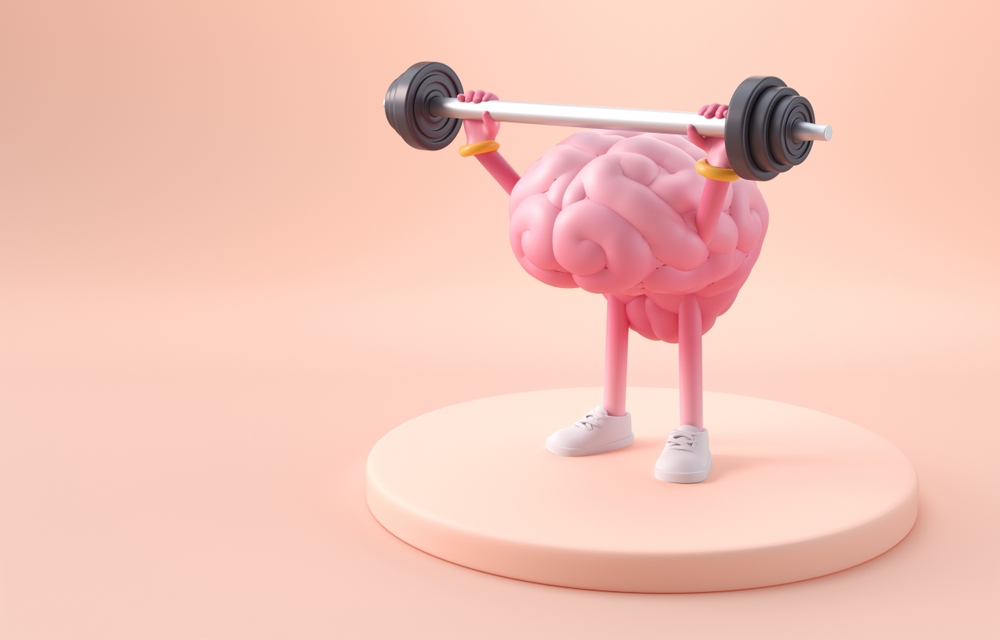Post Traumatic Stress Disorder (PTSD) is characterized by three primary symptom categories: (1) reliving the trauma in real-time, (2) avoiding reminders linked to the trauma, and (3) experiencing a continuous sense of danger, which can manifest as heightened startle reactions and vigilance (Karatzias et al., 2017). Understanding these symptoms is crucial in developing effective treatment plans that address the unique experiences of individuals suffering from PTSD.
Complex PTSD (CPTSD) incorporates the established three clusters of PTSD, plus three additional clusters that indicate disruptions in self-organization: (1) emotional dysregulation, (2) negative self-image, and (3) difficulties in interpersonal relationships, as classified by the International Classification of Diseases, 11th revision (ICD-11) (Harrison et al., 2021). Recognizing these additional challenges is essential for clinicians to provide holistic and individualized care tailored to each patient’s needs.
The mental health benefits of physical exercise are well-documented (e.g., Chekroud et al., 2018), yet its specific application in treating PTSD and complex PTSD is still under-researched. Biernacka et al. (2024) set out to achieve several important research objectives to address this gap:
- Investigate trauma clinicians’ perspectives on the role of physical exercise in the treatment of both PTSD and CPTSD.
- Identify the main barriers and facilitators that influence clinicians’ recommendations regarding physical exercise as an adjunctive treatment for PTSD and CPTSD.

Research to date on physical exercise as a supportive intervention for PTSD and CPTSD remains limited, and it often neglects clinicians’ perspectives.
Research Methodology to Understand Clinicians’ Perspectives
The study utilized semi-structured interviews with qualified mental health professionals in the UK specializing in treating PTSD and CPTSD within outpatient trauma services. These tertiary-level services consist of skilled psychological therapists who work collaboratively with clients to make informed treatment decisions. This collaborative approach ensures that each individual’s unique experiences and needs are taken into account during the treatment process.
An interview guide was crafted by the research team, focusing on the study’s key questions. It commenced with inquiries about clinical practice and encompassed participants’ views on endorsing physical exercise for PTSD/CPTSD, as well as perceived barriers and facilitators (e.g., What factors do you believe could enhance the integration of physical exercise as a complementary treatment for PTSD/CPTSD?). This structured framework aimed to elicit comprehensive insights from the participants.
Participants were recruited using purposive and snowball sampling methods. Initial contact was made through professional trauma networks and social media platforms. Interested clinicians were subsequently followed up, and those opting to participate provided written informed consent along with a sociodemographic form detailing their gender, age, ethnic background, occupation, workplace, and UK region. All interviews were conducted remotely, with recordings transcribed verbatim while ensuring the removal of identifying information. Pseudonyms were assigned in the results to safeguard participants’ anonymity.
Reflexive thematic analysis (Braun & Clarke, 2006) was employed to systematically analyze the data, capturing a diverse range of opinions that could inform future clinical practice and research initiatives. Team discussions ensured reflexivity, allowing the authors to critically examine their beliefs and assumptions to minimize bias. The varied personal and professional backgrounds of the research team contributed to the depth of the study. The authors adopted a critical realist approach, aligning with the principles of reflexive thematic analysis. Finally, the researchers adhered to the Standards for Reporting Qualitative Research (SRQR; O’Brien et al., 2014) to ensure trustworthiness through discussions with clinical peers and participant validation of preliminary findings.
Key Findings from Trauma Clinicians on Exercise in Treatment
The study included 12 participants, with a majority identifying as female (75%). The ages of participants spanned various decades, with equal representation from the 30–39, 40–49, and 50–59 age groups, each comprising 25% of the sample. A smaller proportion were under 30 (16.7%), and only one participant (8.3%) was aged 60 or older. All participants identified as White (100%). In terms of professional roles, most were Clinical Psychologists (75%), while the remainder were evenly distributed among Counselling Psychologists, Counsellors/Psychotherapists, and CBT Therapists, each representing 8.3% of the sample.
Participants were employed in varied settings: half (50%) worked within the National Health Service (NHS), 25% were in private practice, and 16.7% were affiliated with universities. One participant (8.3%) operated in both the NHS and private practice. The majority of participants were based in London (41.7%), with smaller groups from the South East (16.7%), South Central (16.7%), and South West (16.7%) regions of the UK. Only one participant (8.3%) was located outside of these national regions.
Three primary themes emerged regarding clinicians’ views on incorporating physical exercise into PTSD and CPTSD treatment: the potential benefits of physical exercise, the barriers to its inclusion, and the significance of personalized care that shapes both the benefits and challenges.
Recognizing the Significant Benefits of Physical Exercise
All participants acknowledged the inherent value of physical exercise. However, their perceptions of its importance and practical integration into treatment varied significantly. Many clinicians regarded exercise as a vital aspect of recovery for individuals affected by trauma. While some viewed it merely as general health guidance, others intentionally wove it into therapeutic sessions, recognizing its potential to enhance both mental and physical well-being. For some clients, engaging in physical exercise served as a pathway to regain control over their lives. Activities such as yoga, running, and walking were highlighted as powerful tools for fostering autonomy and rebuilding confidence.
So, there’s the physical exercise part, but is it the intrinsic physical exercise that’s the important bit or is it all the stuff that comes around it, like the social structures or the things like people doing park run.
Clinicians observed that physical exercise was beneficial for clients in alleviating symptoms of hyper-arousal and hyper-vigilance, along with managing anxiety levels effectively.
I also felt it would help him with that constant shaky sense of being vigilant and on guard. So, it would help to make that anxiety lower.
Several clinicians reported that they purposefully incorporated physical exercise for its potential to assist in processing trauma memories. They indicated that specific forms of exercise, which engage both sides of the body, might be particularly advantageous, as they can replicate the mechanisms involved in Eye Movement Desensitization and Reprocessing (EMDR).
It also fits alongside for me something of EMDR, as well. So, moving or running, it’s about bilateral stimulation, so you are activating the left and right-hand sides. (…) so walking is good for that kind of movement that activates bilateral stimulation.
Identifying Barriers to Integrating Exercise into Treatment
Clinicians highlighted numerous barriers that impede the incorporation of physical exercise into trauma treatment. These challenges were categorized into environmental, client, clinician, and service-related barriers. Each category presents unique obstacles that need to be addressed to enhance the integration of exercise in therapeutic contexts.
Clinicians emphasized that socio-economic factors significantly influence clients’ capacity to engage in physical activity. Vulnerable clients frequently lack essential resources, such as gym memberships or appropriate footwear for running. Additionally, the limited availability of programs like “exercise on prescription” exacerbates this issue, with many clinicians expressing uncertainty about its current status.
[vulnerable clients] don’t have those resources and feel isolated. They are the ones that need this. But we need funding. You need the funding, for the support workers, the kind of safe spaces in the gym, for training people in the gym or outdoors or, you know, wherever it is, having a range of different approaches, and different things for different ages.
The absence of trauma-informed and culturally sensitive exercise environments also posed a significant challenge. Gyms and swimming pools were often perceived as intimidating settings, particularly for survivors of abuse. Clinicians shared how such environments could be noisy, predominantly male, and triggering for clients.
There is something quite challenging about being, say, in a swimming pool or a gym environment, you know, there is a lot, for women, there is a lot of men around, your body is quite on display, and I think that for people who have been abused, of it there is like permanent scarring, things like that, I think that can be quite a challenge.
Cultural considerations played a crucial role as well. For instance, clients facing language barriers might struggle to articulate specific needs, such as exercise adaptations for physical limitations, to instructors. This can further complicate their ability to access appropriate support.
From a client-focused perspective, many clients experienced intense anxiety about leaving their homes, rendering outdoor exercise practically impossible. While home-based workouts presented an alternative, limitations in space within small living environments further restricted this option. Additionally, the act of exercising could trigger recollections of trauma, as natural physical sensations like labored breathing might evoke distressing memories. Nevertheless, clinicians noted that these triggers could offer therapeutic opportunities for desensitization.
…many of my clients avoid leaving the house completely, just because they are so anxious about being triggered by things like noises, airplanes, certain smells, (…) if you think of exercise, you might be thinking to leave the house. Obviously, you can do work at home, but if your house is quite small, you’re quite limited, aren’t you?
Moreover, physical conditions such as chronic pain acted as significant deterrents to engaging in exercise. While clinicians recognized that even minimal activity could yield benefits, they emphasized the importance of setting realistic expectations for clients.
Many clients’ co-occurring depression severely hampered their motivation to engage in physical activity. Clinicians described this as a “chicken and egg” dilemma, where clients’ lack of motivation could potentially be remedied by exercise, yet initiating that process remained a substantial hurdle. Clients often struggled to recognize the value of exercise, especially if they lacked prior experience or felt disconnected from their past athletic capabilities. Feelings of shame, particularly among clients with CPTSD, further obstructed their engagement in self-care practices, including physical activity.
Lastly, some clients prioritized other concerns over exercise due to previous difficulties meeting basic needs like food and shelter, which significantly impacted their overall well-being.
In addition to client-related barriers, several issues at the clinician and service levels were identified. Many clinicians acknowledged that physical exercise was frequently overlooked in trauma treatment. Some participants reflected that the interviews themselves represented the first instance they had considered exercise as a viable treatment component. Clinicians expressed frustration regarding the insufficient emphasis placed on exercise within their professional training. Some clinicians felt ill-equipped to safely recommend exercise, particularly for clients with existing physical health issues.
I think sometimes it can feel a bit deskilled in terms of knowing how much to push. In line with that, you don’t want to exacerbate a physical condition, but at the same time, we know that a lot of things like chronic pain, fibromyalgia, any … like some kind of pace activity is actually more beneficial, but I guess it’s not necessarily having the knowledge to know how much to push that.
Participants underscored the necessity for multidisciplinary teams, incorporating personal trainers or occupational therapists, to bridge this knowledge gap. Clinicians also highlighted the need for more accessible evidence, guidelines, and resources to confidently recommend exercise as part of a comprehensive treatment plan.

Clinicians found exercise to be beneficial in trauma treatment, however some notable barriers included lack of clinical confidence and training to incorporate physical exercise in psychotherapy.
Insights on the Integration of Physical Exercise in PTSD Treatment
This study emphasizes the potential of incorporating physical exercise as a vital component in the treatment of PTSD and complex PTSD while highlighting the necessity to address systemic barriers that hinder its effective implementation. By delving into trauma clinicians’ perspectives, the research offers essential insights for seamlessly integrating exercise into trauma care, thereby fostering more comprehensive and patient-centered treatment methodologies.

The findings underline the importance of developing personalised approaches to integrate physical exercise into trauma therapy while addressing existing service gaps.
Strengths and Limitations of the Study
This research provides valuable insights into trauma clinicians’ perspectives on the integration of physical exercise into the treatment of PTSD and complex PTSD. It addresses a crucial gap in understanding alternative therapeutic modalities. A significant strength of this study is its focus on a topic that is frequently overlooked in trauma therapy, which has the potential to enhance evidence-based practices. The qualitative design allows for an in-depth exploration of clinicians’ experiences, yielding nuanced findings that could inform tailored interventions. The inclusion of a diverse group of clinicians enhances the richness of the data, providing a broader perspective on the challenges and facilitators associated with integrating exercise into trauma treatment.
The paper holds clinical significance, underscoring the potential benefits of exercise in improving outcomes for patients grappling with PTSD and CPTSD. Its relevance is amplified by the rising interest in holistic mental health interventions. The findings advocate for further investigation into how exercise can complement traditional therapies, potentially broadening treatment options for individuals with trauma-related disorders.
However, the study does have limitations. While the sample size is adequate for qualitative research, it may not fully encapsulate the views of trauma clinicians across diverse contexts and healthcare systems. The sample reflects diversity in professional roles and settings but lacks diversity regarding ethnicity and geographical representation.
Although the findings highlight barriers such as resource limitations and lack of training, the study does not provide in-depth solutions or actionable recommendations for overcoming these challenges. Future research could address these gaps by exploring perspectives from a broader, more diverse sample and testing practical strategies for effectively integrating exercise into trauma care.

The study underscores the promise of exercise in trauma therapy while revealing gaps in diversity and actionable strategies.
Implications for Clinicians and Service Providers
Incorporating physical exercise into the treatment regimen for PTSD and CPTSD holds significant promise for enhancing patient outcomes, yet certain practical challenges must be navigated. Clinicians should contemplate including physical activity as a complement to conventional therapies, customizing their approaches to align with the unique needs and preferences of each patient. To facilitate this integration effectively, training programs should empower clinicians with the necessary skills to incorporate exercise into treatment plans while addressing potential barriers, such as resource limitations and patient readiness.
Service providers are encouraged to develop accessible, trauma-informed exercise programs in collaboration with fitness professionals to ensure safety and inclusivity. Group-based exercise initiatives may foster social support, which can be particularly beneficial for individuals recovering from trauma. Policymakers and healthcare leaders should allocate resources to enhance access to these programs, especially in underserved regions.
Lastly, there is a pressing need for more efforts to diversify research and practice by including insights from a broader spectrum of clinicians and patients across various cultural and geographic landscapes. This inclusive approach can illuminate culturally specific barriers and facilitators, ultimately leading to more equitable implementation of exercise-based interventions.
<div id="attachment_211












